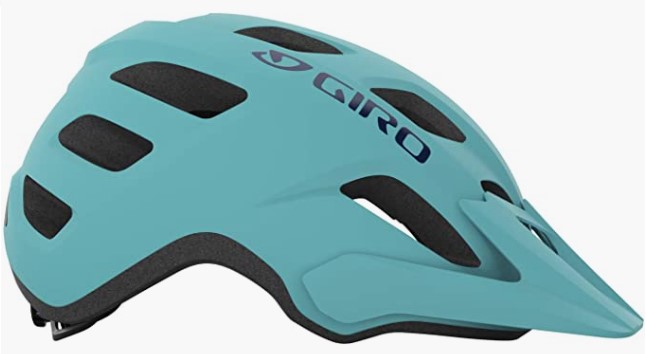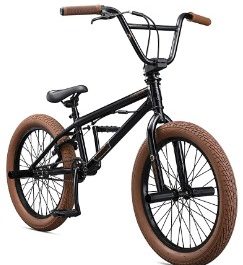Bike helmets do not have an expiry date stamped per se, which is why some people will go overboard when purchasing one, probably investing so much in what they refer to as a ‘one-time purchase.’ But how often should you replace your bike helmet?
Most bike helmet manufacturers recommend replacing your bike helmet after 3-5 years, while the Consumer Product Safety Commission (CPSC) recommends 5-10 years. However, do it sooner in the event of a crash, too much environmental exposure, or when the padding loosens.
Also note that advancements in technology intended to make your rides smoother are another drive to replacing a bike helmet.
As I mentioned earlier, bike helmets do not have an expiry date. Therefore, a good quality helmet, when properly maintained, could last decades.
So, why the 3 to 5-year replacement recommendation?
There are speculations that this is just a marketing strategy. In marketing, a product, however good, will never be passed as a ‘one-time purchase’ to last a lifetime. Consumers will always be lured to go back and make a different, better purchase. Is this the case?
In this article, I give a detailed insight into bike helmet replacement. We’ll dig deep into the lifespan of a bike helmet, when and why to replace it, and the best way you can take care of your helmet.
I will also briefly discuss some of the best bike helmets you can purchase.

In General, How Often Should You Replace Your Bike Helmet?
Putting on a cycling helmet is not enough. You need to be confident that it will serve its intended purpose and protect you if an accident occurs.
Having been made from suitable, long-lasting materials and being certified are all necessary. However, regularly inspect your helmet to ensure it’s in good condition to absorb shock during impact.
Since helmets can be quite expensive, you may want to replace them only when it’s essential. The following are instances where you will be required to replace your helmet urgently.
1. In The Event of a Crash
The outer shell of a bike helmet is intended for spreading shock all around during impact, while the padding inside protects your skull from direct impact by absorbing the excess shock.
Sometimes, depending on how intense a crash is, the padding breaks. However, often it seems to stay intact even after impact. It’s important to note that invisible damage doesn’t mean it’s not there.
The padding will not withstand a second crash and absorb shock as well as the first time. The helmet will not protect you as well as it should, putting you at risk of head injury when riding.
Vibration from impact could also compromise the structural integrity of the helmet. Most helmets have EPS glued to the outer shell.
So, what happens during a crash? The padding either comes off or the glue loosens up a bit. That means the helmet will not be of much help if there’s a second crash. That’s why Helmets.org recommends replacing it after a crash.
2. Excessive Environmental Exposure
Despite most manufacturers installing UV inhibitors to the helmet during construction, sunlight and too much exposure to heat weaken the helmet’s outer shell.
Your helmet could be prone to brittle, depending on how often you ride under the sun. And so during impact, instead of the outer shell spreading the shock all around, it’s more likely to break easily.
This is why most manufacturers advise replacing the helmet after about five years, depending on how much heat it has been exposed to over time. Therefore, if your helmet starts to fade, it is time to set out for a new helmet.
3. Loose Fitting
For a helmet to offer maximum protection, the helmet needs to fit perfectly. However, with time, helmet straps are bound to wear out or become loose. That would call for a new helmet.
Newer helmets also come in a variety of shapes and sizes. If a more modern helmet fits better than the one you have, it is advisable to replace it to get maximum protection.
4. Advancements in Technology
Newer helmets offer a better view while cycling, with some having electronics such as heart rate monitors, lights, and technologies to measure distance covered and head position.
Despite this not being a life-threatening scenario or urgent, keeping up with technology could make rides more comfortable and enjoyable.

And How Often Should You Replace Your Mountain Bike Helmet?
As we have already established, regardless of how old your helmet is, you need to replace it after a crash or if you notice loose straps, fitting, or fading color.
MTB cyclists face severe accidents. You, therefore, do not want to take a chance with any head injury. So, carefully inspect your helmet. Look out for any damage on the interior and exterior.
Depending on how often you use your MTB helmet, replace it every 3 to 5 years, as per the manufacturer’s recommendations.
How Often Should You Replace Your Road Bike Helmet?
Again, this depends on how often you use your helmet. If you use it often and under extreme conditions, you might need to replace it in 3 to 5 years. However, it could serve you for up to 10 years and above.
Road cycling accidents may not be as severe as MTB accidents. Either way, you want your helmet to do its job; protect you from any injury to the head.
Thorough inspection for cracks, brittle, dents, or any damage to the outer shell and the padding is necessary. Also, follow the maintenance routine mentioned later in this article.
Increase Your Helmet’s Lifespan
You will agree that everything needs proper maintenance, including a bike helmet. The following are a few reminders to ensure your bike helmet lasts the longest:
Avoid unnecessary direct exposure to heat. This is the most critical factor, which might be harder to observe as sometimes you will spend hours under the sun. Heat affects the structural integrity of any plastic.
Keep your helmet clean. You can do this by use of clean water and soap. Do not use harsh chemicals to avoid corrosion.
Do not share. Yes, you heard that right! Heads differ in size and shape. So when you share your helmet, the fitting might be compromised. Plus, who doesn’t want to ensure proper usage of their property?
Do sufficient research before customizing your helmet. When customizing the inside, you do not want to damage your outer shell or even affect your helmet’s fitting.
Giro Helmets as Replacement Options
When it comes to the replacement of a bike helmet, Giro helmets (Check on Amazon) are an excellent selection to choose from. These helmets are well known for their in-mold polycarbonate shell with EPS liner construction.
They have an average of 18 to 22 vents, yet with the MIPS technology, they provide maximum protection during impact. They come in 5 different types of bike helmets.
- Fixture MIPS
This type features a full hard body shell with a removable visor and extra-plush padding. It has 18 vents with internal channeling.
- Register MIPS
This type is mainly a recreational cycling helmet. It features 22 vents with quick-dry padding, and its universal fit sizing makes it suitable for riders of all ages.
- Isode MIPS
This recreational cycling helmet has 24 vents for maximum air circulation. It fits riders with a head circumference of 54 to 61 cm and has a variety of matte color shades.
- Verce MIPS
Above is a universal women’s bike helmet. It features 18 vents. It utilizes the Multi-Directional Impact Protection System to redirect energy in a crash, offering maximum protection. It is an MTB helmet with a variety of shades and colors. It has extra-plush padding for comfort.
- Vasona MIPS
This is a women’s series bike helmet. It has 22 vents with an easy-to-adjust position and tension with the Roc Loc Sport MIPS Fit System. It’s stylish, with a variety of shades to choose from.

Frequently Asked Questions:
1. Safety-Wise, How Often Do You Need to Replace Bike Helmet?
Replace your bicycle helmet following a crash or if sun or heat exposure compromises the outer shell’s integrity. Also, do it if the straps are worn out, or the inside padding doesn’t fit.
You can also decide to replace your helmet if there are technological advancements in newer helmets that you would be interested in.
2. Should I Replace My Helmet If I Drop It?
It depends. You will need to inspect it for dents or cracks if it drops. Check out for EPS deformation, loosening of the glued parts, or fracture.
If the impact is strong, you may need a replacement even though the damage may not be visible. If there is no noticeable damage and the impact is not severe, you don’t have to replace the cycling helmet.
In conclusion, how often should helmets be replaced?
A good-quality helmet will serve you for years or even decades with proper maintenance. I have discussed some ways to maintain it.
Getting a new helmet is advisable if you notice cracks on the shell or foam or if the straps start to wear off. A replacement would be excellent if your helmet is outdated or has no manufacture date stamped inside.
If you do not want to replace your helmet more often than necessary, I have mentioned a few good-quality helmets worth investing in.
Relevant:

